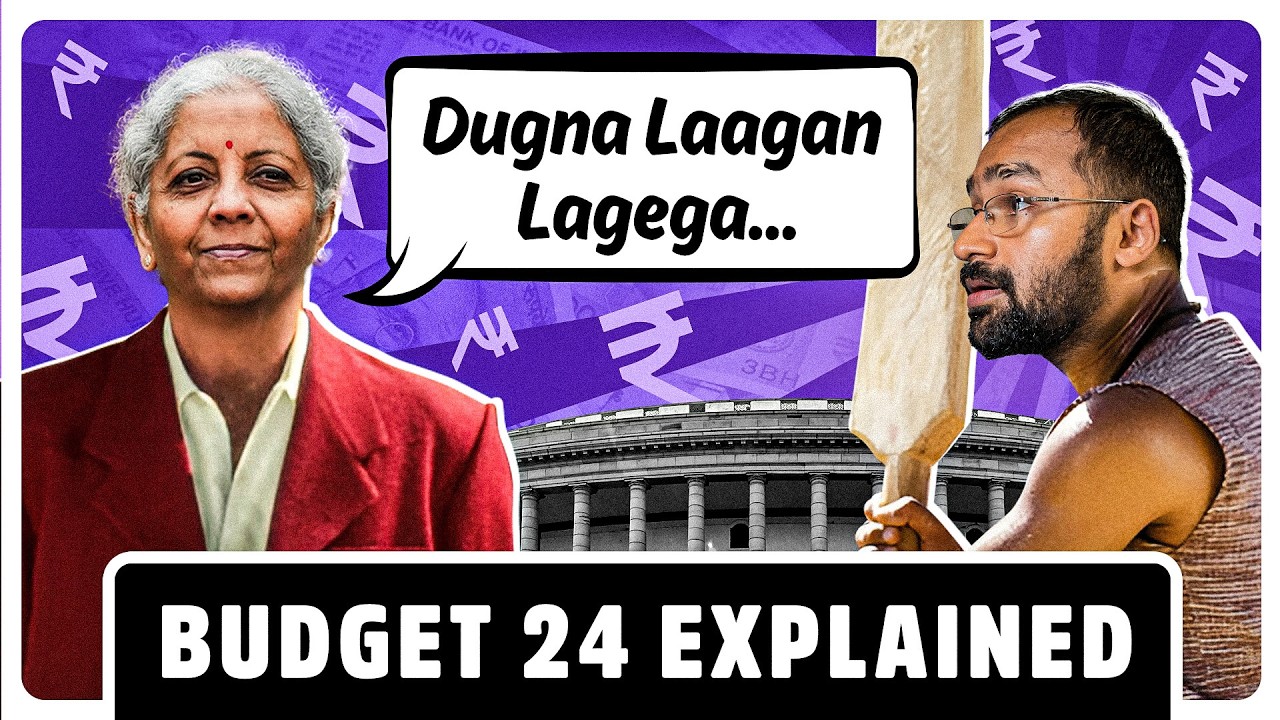Andhra Civilization | History of Telugu Language | Ancient History of Andhras | Andhakas | eleyloo
Summary
TLDRThe Eastern Chalukyas were a prominent South Indian dynasty that ruled Andhra Pradesh for centuries. Telugu, one of India's sweetest languages, evolved through cultural exchanges, dynastic rule, and invasions. Its name, believed to derive from Sanskrit or tribal languages, reflects its rich heritage. The language belongs to the Central Dravidian family and shares linguistic ties with languages like Gondi. Telugu literature, influenced by Sanskrit, flourished with key works such as the *Mahabharata* translations. The language's classical status was solidified by figures like Tyagaraja Swami. Its script, closely related to Kannada, remains a symbol of cultural identity.
Takeaways
- 😀 The Eastern Chalukyas ruled the region of modern-day Andhra Pradesh for around 5 centuries during the medieval period.
- 😀 Under Chalukya patronage in the 11th century, the *Andhra Mahabharatam* was written by Naya Bhatta, a prominent poet.
- 😀 Telugu, a sweet language spoken in Andhra Pradesh and Telangana, is praised for its cultural richness and historical significance.
- 😀 The etymology of the word 'Telugu' is debated, with theories linking it to Sanskrit *Trilinga*, the word *Tungu* (southerners), and the tribal language Gondi.
- 😀 Telugu is part of the Central Dravidian language family, closely related to languages like Gondi, Kui, and Kuyi.
- 😀 The ancient name for Telugu-speaking people, *Andhra*, is thought to have roots meaning 'darkness,' as noted in Sanskrit and Buddhist literature.
- 😀 The word *Andhaka*, used in ancient texts like those of King Ashoka, may refer to the Telugu-speaking people of the region.
- 😀 Telugu has various dialects, with its characteristics shaped by the influence of Sanskrit and regional languages.
- 😀 The first published Telugu grammar, *Telinga*, marked a key moment in the development of Telugu literature and its scholarly recognition.
- 😀 Telugu literature was greatly influenced by Sanskrit culture, especially through translations of religious texts like the *Mahabharata* and *Ramayana*.
- 😀 The Telugu script shares similarities with Kannada, both having evolved from the Kadamba script, with Krishna Deva Raya's reign marking a significant literary period in Telugu history.
Q & A
What was the role of the Eastern Chalukyas in the development of Telugu culture?
-The Eastern Chalukyas ruled over the Andhra Pradesh region for around five centuries and were patrons of Telugu culture. Under their rule, significant literary works like the *Andhra Mahabharatam* were created, which helped shape the language and its literary traditions.
Who wrote the *Andhra Mahabharatam*, and in which century?
-The *Andhra Mahabharatam* was written by Naya Bhatta in the 11th century, under the patronage of the Chalukya kings.
What are some theories about the etymology of the word 'Telugu'?
-There are several theories about the origin of the word 'Telugu'. Some scholars believe it is a corruption of the Sanskrit word *trilinga*, while others suggest it comes from *tungu* meaning 'southerners', or even from the tribal language *Gondi*.
Which language family does Telugu belong to, and what are some other languages in this family?
-Telugu belongs to the Central Dravidian language family. Other languages in this family include Gondi, Kui, and Kui, which are closely related to Telugu.
What was the significance of the term 'Andras' in the context of Telugu history?
-The term 'Andras' refers to the people now known as Telugu. It is believed to be derived from the word 'Andhaka', which appeared in ancient inscriptions and Buddhist Pali literature, highlighting the historical presence of the Telugu people in the region.
How did Sanskrit influence the development of Telugu literature?
-Sanskrit had a significant influence on Telugu literature, especially during a period when Sanskrit culture spread through translations. This led to the creation of major works like the *Mahabharata* in Telugu and the development of distinct literary genres.
What are the key genres of Telugu literature mentioned in the script?
-The key genres of Telugu literature mentioned include *Prabandham*, *Kavyam*, and *Shatakam*. *Shatakam* is a genre that consists of collections of 100 poems with moral teachings.
Who is VI, and what is his contribution to Telugu literature?
-VI is a notable poet from the *Shatakam* genre, known for his moral teachings, practical wisdom, and kindly advice. He is considered one of the greatest moral teachers of the Andra region.
What is the significance of Krishna Deva Raya in the context of Telugu literature?
-Krishna Deva Raya's reign marked the beginning of a new era in Telugu literature, with independent writing flourishing during his time. His era contributed significantly to the recognition of Telugu as a classical language.
How is the Telugu script related to the Kannada script?
-The Telugu script shares many similarities with the Kannada script, as both evolved from the Kadamba script, highlighting the close historical and linguistic connection between the two languages.
Outlines

Dieser Bereich ist nur für Premium-Benutzer verfügbar. Bitte führen Sie ein Upgrade durch, um auf diesen Abschnitt zuzugreifen.
Upgrade durchführenMindmap

Dieser Bereich ist nur für Premium-Benutzer verfügbar. Bitte führen Sie ein Upgrade durch, um auf diesen Abschnitt zuzugreifen.
Upgrade durchführenKeywords

Dieser Bereich ist nur für Premium-Benutzer verfügbar. Bitte führen Sie ein Upgrade durch, um auf diesen Abschnitt zuzugreifen.
Upgrade durchführenHighlights

Dieser Bereich ist nur für Premium-Benutzer verfügbar. Bitte führen Sie ein Upgrade durch, um auf diesen Abschnitt zuzugreifen.
Upgrade durchführenTranscripts

Dieser Bereich ist nur für Premium-Benutzer verfügbar. Bitte führen Sie ein Upgrade durch, um auf diesen Abschnitt zuzugreifen.
Upgrade durchführenWeitere ähnliche Videos ansehen

BJP's Strategy to WIN SOUTH INDIA | Kanishk Verma

That Time an Indian Kingdom Invaded Southeast Asia | Rajendra Chola and the Maritime Chola Empire

విజయవాడ విలయం వెనుక.. ఖమ్మం కన్నీటి వెనుక.. || Thulasi Chandu

DNA : मुफ्त वाली राजनीति देश को कैसे 'महंगी' पड़ेगी? | Freebie Politics In India | AAP | Hindi News

Blockbuster or Disaster? | Budget 2024 EXPLAINED in just 15 minutes

అంతా ఆ ముగ్గురే..సిట్ విచారణలో భయంకర నిజాలు | Shocking Facts Revealed in Raj Kasireddy SIT Enquiry
5.0 / 5 (0 votes)
